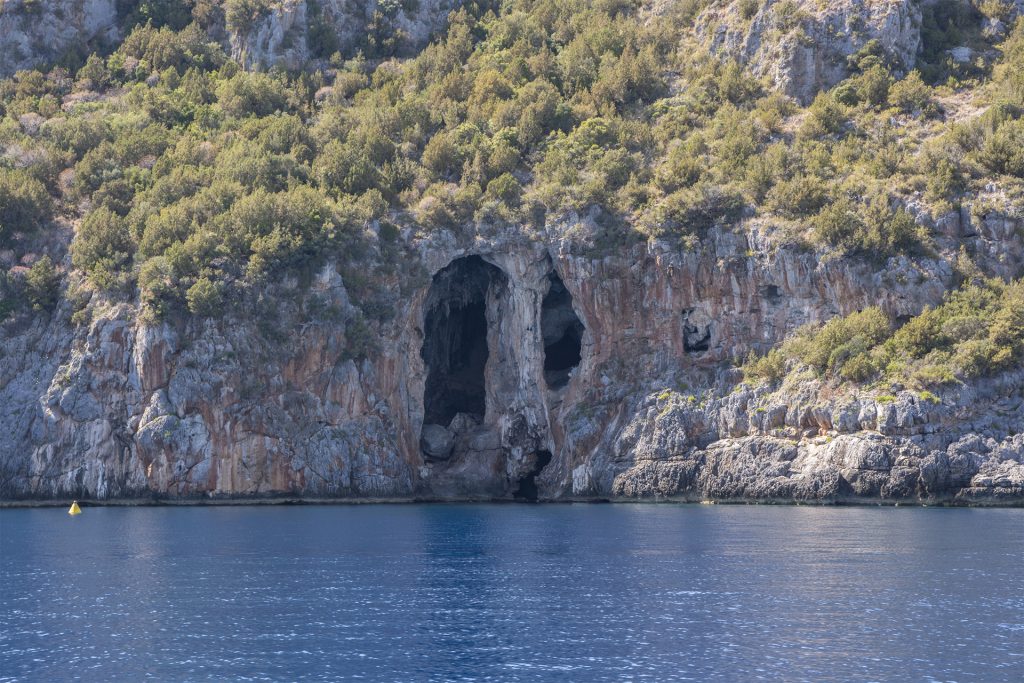LConsult our Guide to discover all the paths you can take while staying in Marina di Camerota.

Grotta del Noglio: today the cave, located along the coast to the east of Marina di Camerota, cannot be reached from the mainland: the only entrance opens into a vertical wall overlooking the sea, about three meters high. Some clues have revealed to the archaeologists that man has inhabited this place in different periods of prehistory; the traces of human presence have been preserved on a platform located at a height of 17 meters, not reached by marine erosion. Numerous artifacts have been unearthed, of which the most significant are ceramic containers.
Find out more
Grotta della Cala: the plan of the cave has an hourglass shape and is composed of an ante-cave and a back-cave, connected by a bottleneck. The most significant layers are those of a particular cultural period of the Upper Paleolithic, called “Gravettiano”, but interesting finds also come from the most recent layers: from the Mesolithic a painted pebble, from the Neolithic a child burial and from the subsequent Copper Age ceramic containers and some bone hooks. Inside the cave, using the “InCamerota” App and framing the QR Codes, it is possible to listen to the contextual audio-guide.
Find out more
Grotta della Serratura: deep and high cavern originated along an important fault in the coastal limestone ridge; the cave, which opens onto the beach of Lentiscelle, was frequented by human groups from the Upper Palaeolithic, the Mesolithic and the Middle and Recent Neolithic. Some isolated human remains, bone artifacts, ornaments on sea shells, numerous hearths, pebbles painted with a red ocher decorative motif and remains of fauna have been found. Furthermore, the frequent remains of molluscs and brackish water fish indicate a silting up of the coast with the presence of ponds, then repotted from the sea.
Find out more
Grotta e Riparo del Poggio: the Poggio complex is located on a limestone spur east of Marina di Camerota; originally it consisted of a single cave formed by a smaller cavity, the “Grotta”, which functioned as a drainage gallery for a huge cave, the current “Riparo”. There are numerous lithic and faunal finds left by human groups who frequented the site between 200000 and 40000 years ago; from the most ancient levels come the remains of elephants, rhinoceros and two human remains (a molar and an ankle bone), while the more recent layers come from interesting artifacts such as spikes, blades and scrapers.
Find out more
La tonnara di Porto Infreschi: the tonnara, which was active until the mid-1900s, was lowered in the area of the beautiful bay of Infreschi. The base of operations was the long beach of Marina di Camerota where the nets were made, manufactured in the port using mostly plant materials collected in the surrounding hills, such as the “erba spartea” that was woven by the “strambaie” to form long ropes. The tonnara had the pedal a few miles away from the beach, with a pedal on the rocks near the bay. The tuna fishermen lived for the entire fishing season in the ravines of the rocks.
Find out more



No responses yet